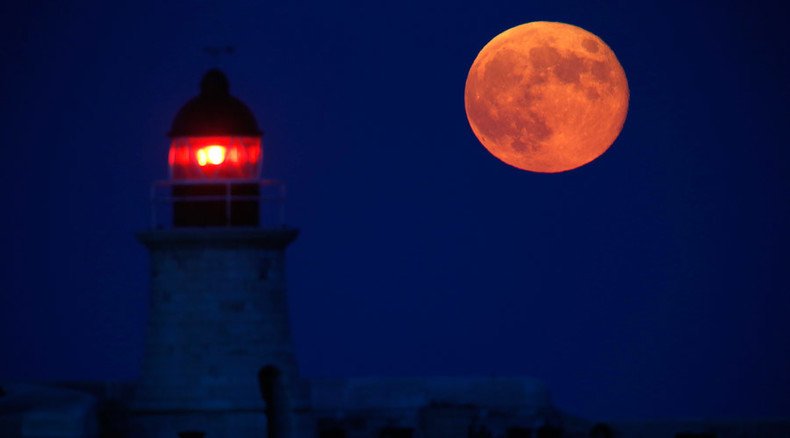Supersize moon & total eclipse combo to leave stargazers in awe on Sept. 28

A total lunar eclipse following the so-called “supermoon” will occur on September 28 bringing the rare phenomenon of four consecutive total eclipses – known as a “tetrad” – to an end.
Early in the morning of September 28 the moon will venture very close by our planet and appear much brighter and bigger than usual. After that the “supermoon” will be completely eclipsed, since the Earth will stand directly between the moon and the sun. After about an hour and a half the celestial body will become visible again.
READ MORE: Sturgeon Moon 2015 rises: Stunning supermoon lights up Saturday night sky (PHOTOS)
As a rule, total eclipses do not have a specific order of occurrence. However, when four total eclipses happen in a row in an approximately six month interval, it is called a lunar tetrad (from the Greek word for “four”). Astronomers have calculated that the number of such tetrads varies from century to century. The current century will have eight of them, which along with the 16th, ninth, and 26th centuries will be an absolute maximum. NASA says. The 20th Century yielded a relatively decent result of five tetrads.
The next lunar eclipse tetrad is scheduled for April 25, 2032.
Supermoon lunar eclipse on September 28, 2015 ends the current lunar tetrad - Blood Moon http://t.co/LCVqISeXca
— The Watchers (@TheWatchers_) August 31, 2015The “supermoon” will light up the skies in many places around the world, followed by the the eclipse, giving astronomy enthusiasts a strong chance to enjoy unique and breathtaking views.
READ MORE: Supermoon solar eclipse thrills sky gazers (PHOTOS, VIDEOS)
The moon, however, won’t be fully invisible. It will appear reddish due to sun rays passing through Earth’s atmosphere and losing most of the blue portion of the spectrum. Thus the phenomenon's nickname, “blood moon”.
Some say that this moon is likely to cause high tides, flooding, earthquakes and even volcano eruptions. Others subscribe to the idea that the super-sized moon symbolizes a forthcoming apocalypse.












